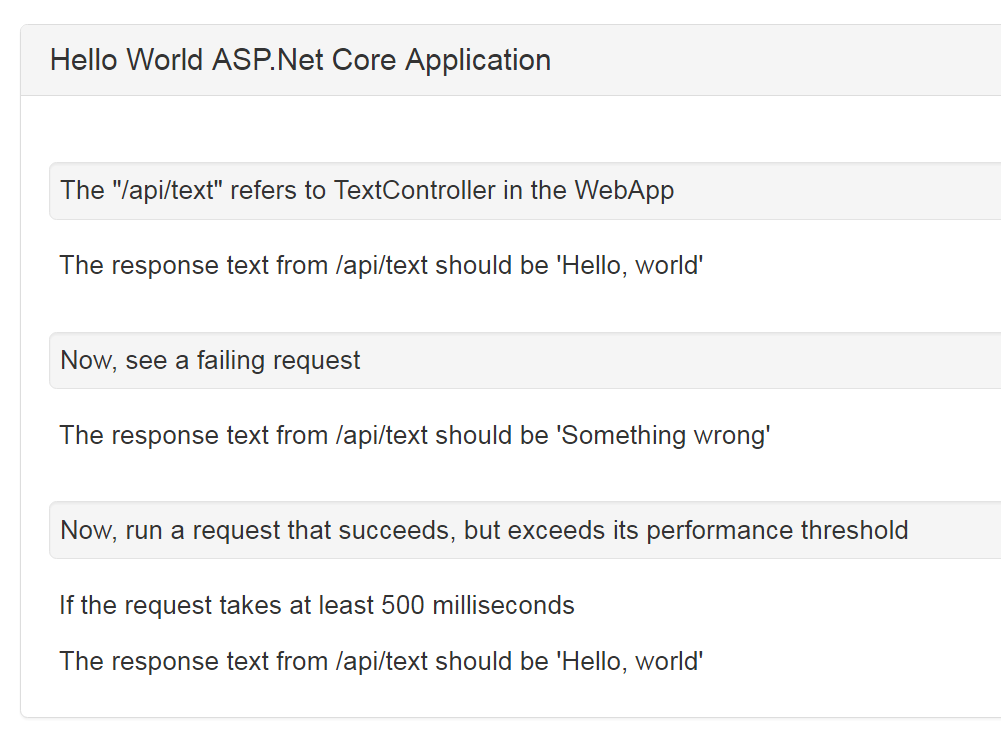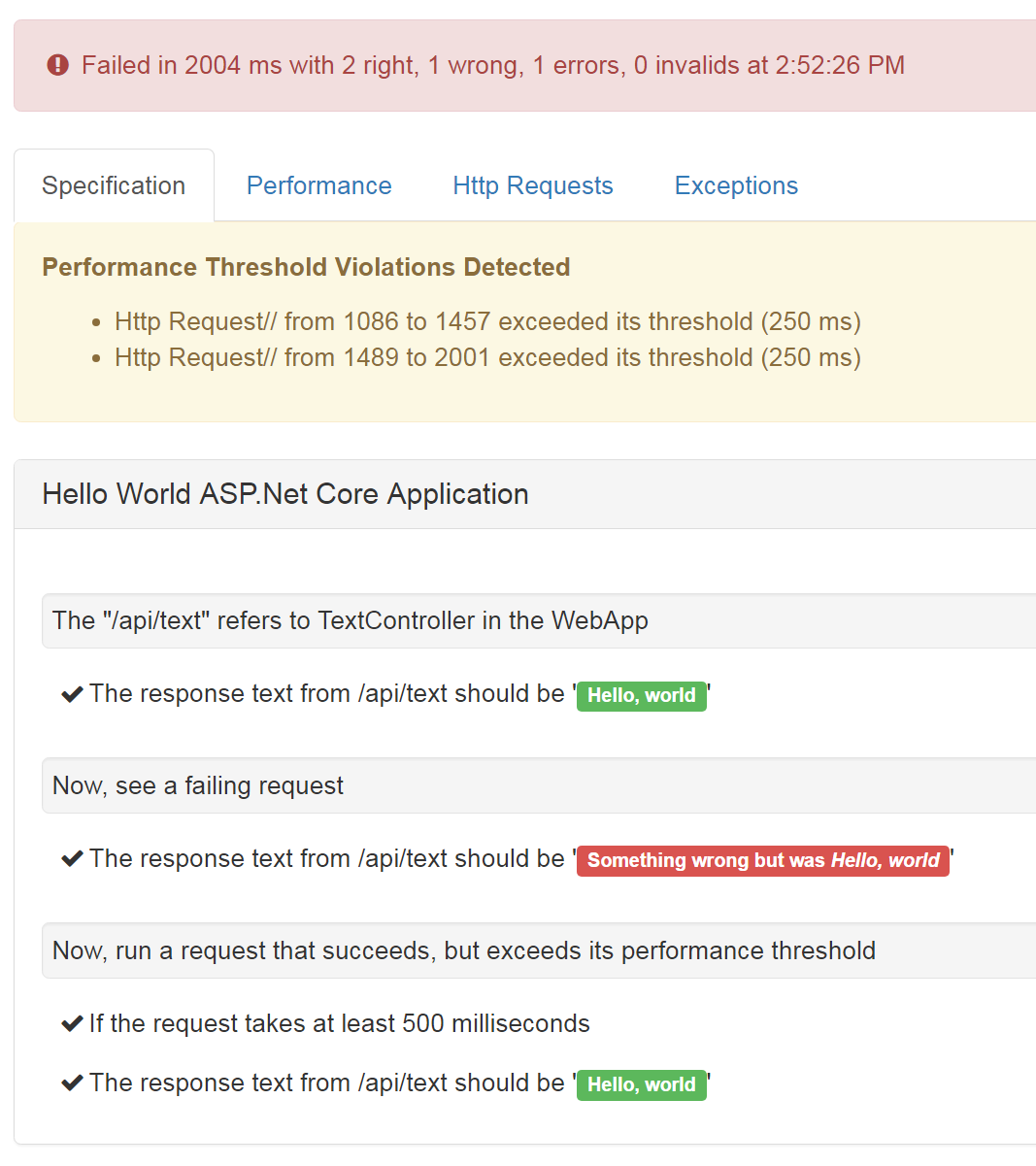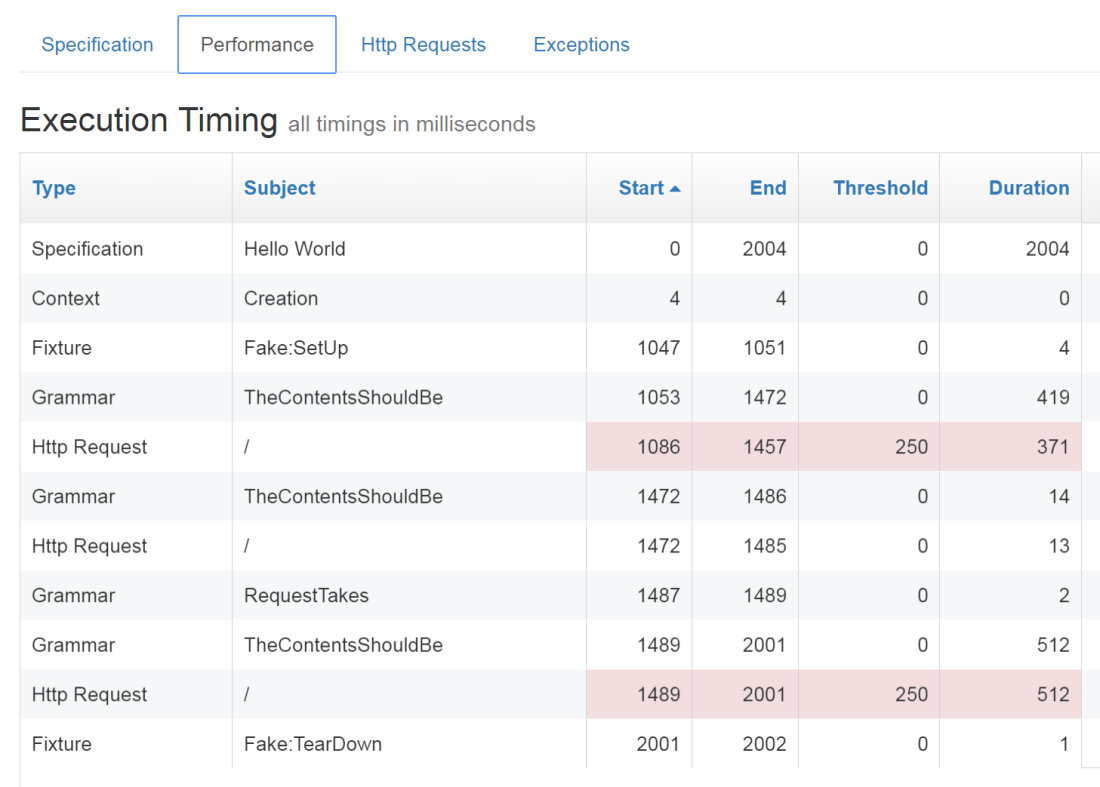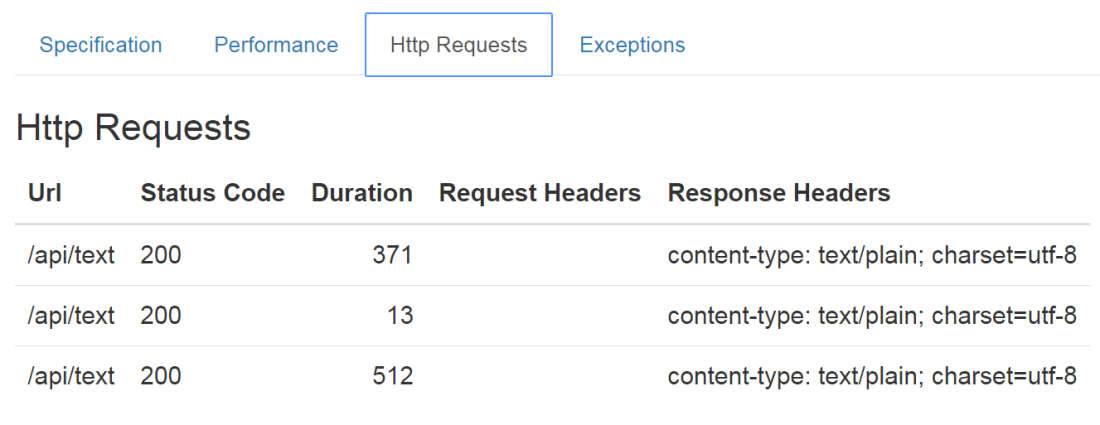Continuing my rushed education into ASP.Net Core, today it’s time to talk about how to use Storyteller against ASP.Net Core systems.
As my shop has started to adopt ASP.Net Core on new projects, my team at work has started to translate some of the test automation support tooling we had with FubuMVC to new tooling that targets ASP.Net Core. A couple weeks back I released a new open source library called Alba for xUnit-based integration testing of ASP.Net Core applications. This week it’s on to our new recipe for using Storyteller to author specifications against ASP.Net Core systems.
It isn’t documented anywhere but here (yet), but we’ve created a new Storyteller addon called Storyteller.AspNetCore to provide a quick recipe for ASP.Net Core applications. The first step is to tell Storyteller how to bootstrap your ASP.Net Core system. At its very simplest, you can write this code in your Storyteller specification project (see the getting started documentation for some context on this):
public class Program
{
public static void Main(string[] args)
{
// Run the application defined by the Startup class
AspNetCoreSystem.Run(args);
}
}
More likely though, you’re going to want to customize the bootstrapping or add other directives. In that case you can subclass the AspNetCoreSystem like this example:
public class HelloWorldSystem : AspNetCoreSystem
{
public HelloWorldSystem()
{
UseStartup();
// You can add more directives to the IWebHostBuilder
// like so:
Configure(_ => _.UseKestrel());
// No request should take longer than 250 milliseconds
RequestPerformanceThresholdIs(250);
}
}
Keeping this ridiculously simple, let’s say you have a controller like so:
[Route("api/[controller]")]
public class TextController : Controller
{
public static int WaitTime = 0;
[HttpGet]
public string Get()
{
Thread.Sleep(WaitTime);
// I'm an MVC newb, and I'm sure there's a better way to do
HttpContext.Response.Headers.Append("content-type", "text/plain");
return "Hello, world";
}
}
To author specifications against that HTTP endpoints, I wrote a Fixture class that inherits from the new AspNetCoreFixture base class (and gets some help from Alba):
public class FakeFixture : AspNetCoreFixture
{
public FakeFixture()
{
Title = "Hello World ASP.Net Core Application";
}
public override void SetUp()
{
TextController.WaitTime = 0;
}
// This is just to fake slow http requests for demonstration purposes
[FormatAs("If the request takes at least {duration} milliseconds")]
public void RequestTakes(int duration)
{
TextController.WaitTime = duration;
}
[FormatAs("The response text from {url} should be '{contents}'")]
public async Task TheContentsShouldBe(string url)
{
var result = await Scenario(_ =>
{
_.Get.Url(url);
});
return result.ResponseBody.ReadAsText().Trim();
}
}
The grammar method TheContentsShouldBe uses Alba to execute an HTTP request to the given url. Using the Fixture above, we can write a specification that looks like this:

Before I show the results for the specification above, the HelloWorldSystem I’m using in the sample project sets a performance threshold of 250 milliseconds for any http request. Any http request that exceeds this duration will cause the specification to fail with performance threshold violations. Knowing that, here’s the result of the specification shown above:

The initial request incurs some kind of one time “warmup” hit that’s tripping off the performance failure shown above for the first request. I think that my recommendation with the ASP.Net Core testing is to run a synthetic request as part of the system initialization just to get that out of the way so it doesn’t unnecessarily trip off performance threshold rules.
For more context on the performance within the specification results, switch over to the “Performance” tab:

The ASP.Net Core requests show up in this table, with Type = “Http Request” and the Subject column being the relative url of the request.The red color coding designates performance records that exceeded performance thresholds.The performance tab can be invaluable to understand where performance problems may be coming from in your end to end specifications — and not just in spotting slow requests. My shop has used this tab to spot “chattiness” problems in some of our specifications where our Javascript clients were making too many requests to the web server and to identify opportunities to batch requests to make a more responsive user interface.
Lastly, a great deal of the challenge in bigger, end to end integration tests is understanding and unraveling failures. To aid in troubleshooting, the new Storyteller.AspNetCore library adds another tab to the Storyteller results to provide some additional context on specifications:
 If you’re curious, Storyteller pulls this off by using an IStartupFilter behind the scenes to wrap a custom middleware around the rest of the application that feeds information into Storyteller’s results.
If you’re curious, Storyteller pulls this off by using an IStartupFilter behind the scenes to wrap a custom middleware around the rest of the application that feeds information into Storyteller’s results.
Hopefully I’ll be able to complete the documentation on this and some of the other Storyteller extensions we’ve been using at work and get a full 4.2 release out, but that was a bridge too far today;-)
2 thoughts on “Using Storyteller with ASP.Net Core Systems”